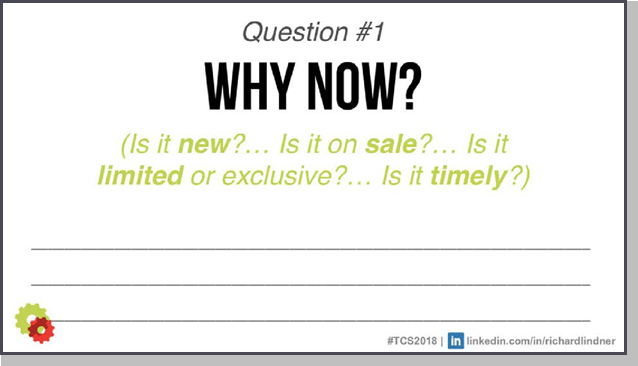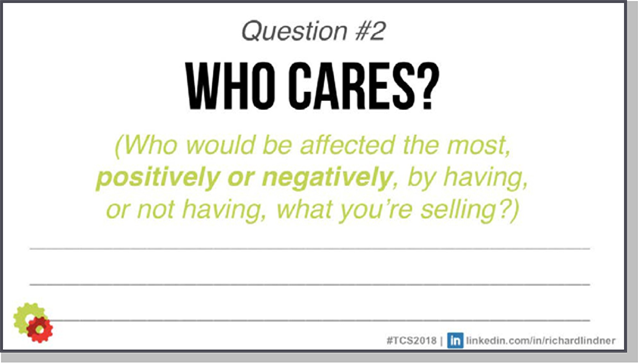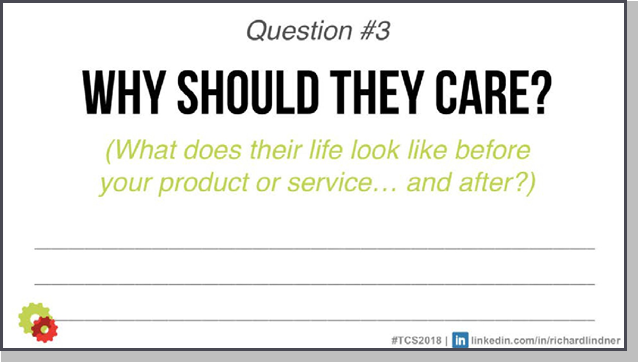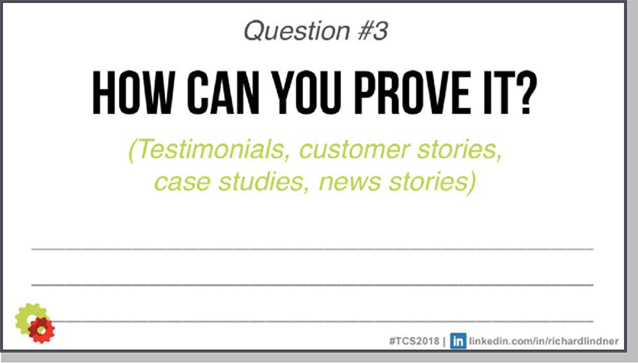Richard Lindner
Richard Lindner is the President and Co-Founder of DigitalMarketer, the industry leader in global digital marketing education. While running a global team of more than
50 professionals worldwide, Richard is also a sought after executive leadership expert, working with some of the world’s most exciting brands like Uber, Harper Collins, Infusionsoft, Maropost, and Ethiad Airlines, to name a few.
Marketing is interruptive and your ideal customers are busy. Interruptive ads don’t have to involve a $200/hour copywriter, in fact they don’t require a copywriter at all. Writing emails, Facebook ads, or any other forms of communication between consumer and company normally starts with the belief that the consumer knows who the company is. They understand how the company will add value to their lives.
This is wrong.
Most people don’t remember who a company is or how they could improve their life. This causes ads to go over their heads and to fail in terms of conversions and sales.
Creating persuasive copy chunks for an email or social media is a process of answering four magic questions.
Question One: Why Now?

The number one question to answer when interrupting somebody is, “Why are you interrupting them now?” For products that aren’t new, exclusive, or limited, this factor of “why now” still has to be implemented. Use testimonials or customer stories to craft a message, like a broadcast email, and then write the subject line as, “This made me think of you.” The email will be sent to either an entire subscriber list or a segment. By putting this
particular subject line, it’s crafting the “why now” and then tying emotion into it. It establishes a conversation that stirs emotion and these are the types of conversations that create conversions.
Who are the people who tend to say, “This made think of you”? Friends and family. Innately people want to be thought about. This email, strikes the chord of somebody close to them thinking about them and leads to more motivation to open it.
Question Two: Who Cares?

Implementing Question 1, motivates the viewer to understand that the time is now for this product, but how do you convince them to care? In the above example, the email subject line was “This made me think of you,” and was designed evoke emotion in the reader. How does a marketer take that emotion and make somebody really care about the product?
At DigitalMarketer, we have a DigitalMarketer Certified Partner Program. To promote this partnership program, an email is curated for any user who has clicked on a link and watched a video on the benefits of the partnership program. The subject line reads, “This made me think of you,” and a past testimonial of a Certified Partner or a customer story is placed in the body of the email. It would say something like,
“Hey Russ, this made me think of you. Someone on our partner success team sent this over to me and it almost made me cry. They were able to do so much and at DigitalMarketer our mission is to double the size of somebody’s business. This person has done exactly that. It made me think of you because I remember just a couple of weeks ago when you became a DigitalMarketer subscriber and you told us that you were an agency and you checked out the partnership program. For whatever reason, probably something we did, you didn’t move on. We didn’t have a conversation and so I’ve got to ask. Do you want to double your agency? Go here and click this.”
Right now, you have tied into emotion and then followed up with how somebody else has already been positively affected by the product. Don’t expect the prospects to connect the dots. If the product helps agencies get more leads, close more sales and generate passive recurring revenue, tell them that.
As soon as you interrupt somebody, tell them why you’re going to interrupt them and who would be affected, positively or negatively, by having or not having what is being sold. The decision to take the positive route or negative route is in the hands of the marketer.
Question Three: Why Should They Care?

The before and after is a statement of what your prospect’s life looks like before meeting you and what it looks like after. What is an average day in their life before the product and what is the average day like after the product?
Tying persuasive copy to emotions makes someone feel something. Sometimes they have to remember pain to feel hope. If you’re talking about the negative aspect of not having something, then you should focus on the negative aspects that your ideal prospect feels in an average day prior to your product.
What is the ideal customer’s mood before they have the product or service? Start to paint a picture of their life without you, articulating their pain to frame the solution. This becomes a statement of value that shows why they should care. Whatever pain their feeling, there is a solution and this is what their business will look like after using the product.
Question Four: How Can You Prove It?

Proof comes in a couple of different ways and has to convince people that they are capable of the results they are looking for. Most business owners believe the product or service can do what it says it does and that other people have had success with it. What they don’t believe is that they can do it. Chances are, they have self doubt and a lack of belief with themselves.
This means that the proof isn’t just in the product but in the customer’s ability to have the same successful results. If the copywriting can overcome doubt, especially self-doubt, the biggest barrier for buying is removed. Customer stories are the most valuable proof. Turn the successful customer into a hero and the product or service as a guide.
If the product is a running insert for long distance runners, it can’t be the hero of the story. The running insert can’t take away the sweat and effort the
person put into running the marathon. It has to be the guide that helped them reach such a major goal.
Customer stories are the key to positioning a product as a guide. Case studies and news stories leverage proof in your copy chunks.
These four magic questions to create persuasive copy chunks tie into the four reasons that people buy.
- Personal gain
- Logic and research
- Social proof or third party influence
- Fear of loss or missing out
Interruptive marketing uses persuasive copy chunks to convert viewers to consumers. They use the basic principles of advertising to tie in emotions, show them why they should care, and how this product or service will transform their day-to-day life.
Expensive copywriters use these questions to market products and impact sales. Using these magic questions they are able to communicate with customers through human to human interaction, not business to business.
Avoid the expensive copywriter and create persuasive copy chunks for email or social media by using the four magic questions.
